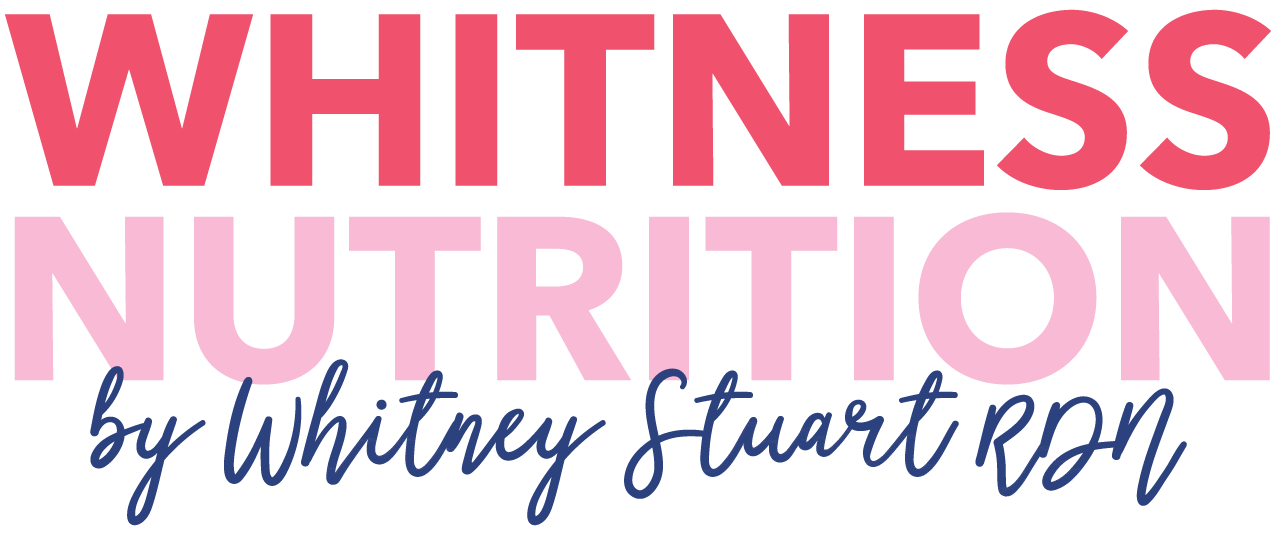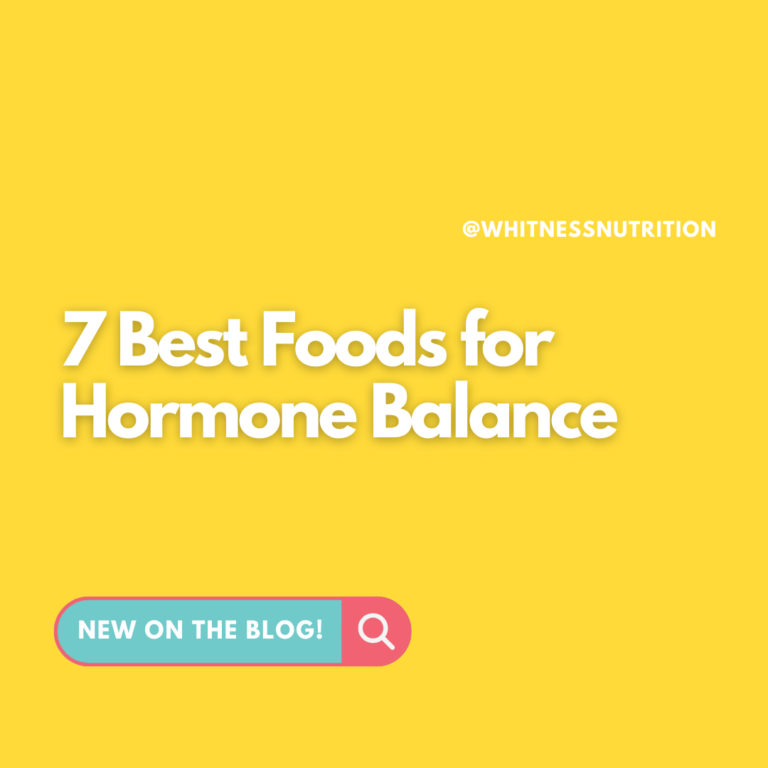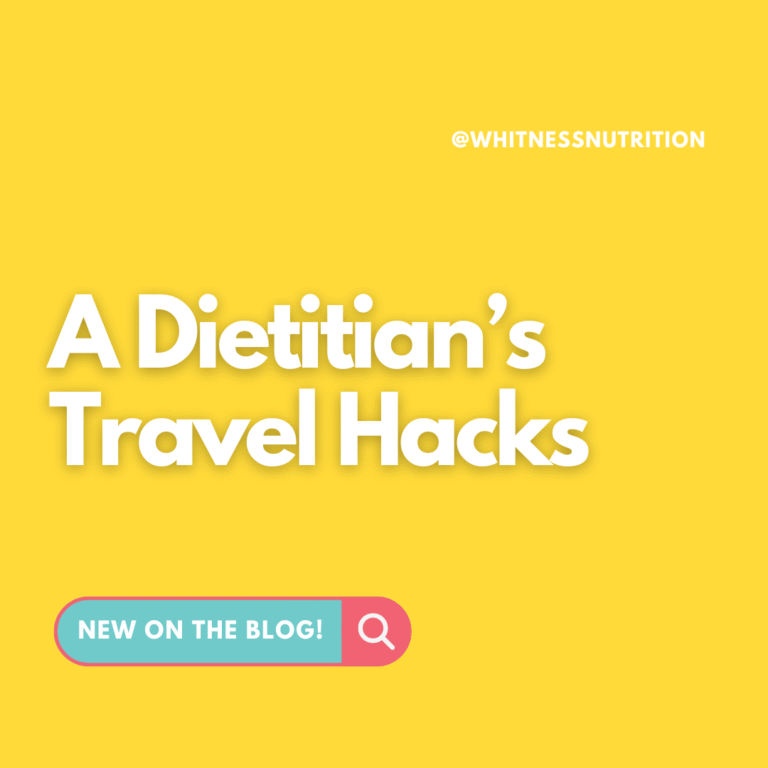Five Healthy Fall Food Favorites
As we enter the Fall and holiday seasons, we have so much to get excited about and look forward to!
The holiday season is upon us, the leaves are changing colors, and we get to look forward to enjoying our favorite Fall treats – both savory and sweet! There can be stress and worry surrounding festive foods. The usual worry of overindulging seems to loom around the holidays, but there’s a better way!
First, it’s important to remember what the approaching holiday season represents. Special occasions are filled with appreciation and thankfulness for your friends and family. You can choose to not dwell on the calories of your plate. Instead, focus on nourishing your body with comforting, nutrient-dense Fall-filled foods that keep your energy up for family football and great conversations with Aunt Pam. Eat slower, savor each bite, and focus on the bigger pie, er, picture this season. The person above the plate matters the most!
Additionally, if you feel like your family event could benefit from some balance, consider some of our healthier swaps for traditional festive Fall foods. You can always fill in meal imbalances by supplementing the meal with a dish! Consider bringing a healthier vegetable side (link), a fiber-filled dessert, a lightened up entree, or one of our traditional swaps, below! The pumpkin bread is a favorite of mine.
And on that note, let’s talk about how you can make healthier swaps when preparing or purchasing your favorite festive, Fall foods.
1. Pumpkin Bread
A fresh loaf of melt in your mouth gluten-free pumpkin bread is unmatched when fall comes around. If you haven’t had a slice yet, stop reading and go have some! Specifically, this one by Phat Foods is my personal favorite!
Most grocery stores carry a selection of pumpkin bread mixes that quite often contain added sugar, vegetable oils, and an unnecessary amount of sugar. Trader Joe’s pumpkin bread mix is definitely a fan favorite but when you read the cooking instructions, you want to consider making some healthy swaps. And, swaps are what I’m best at! 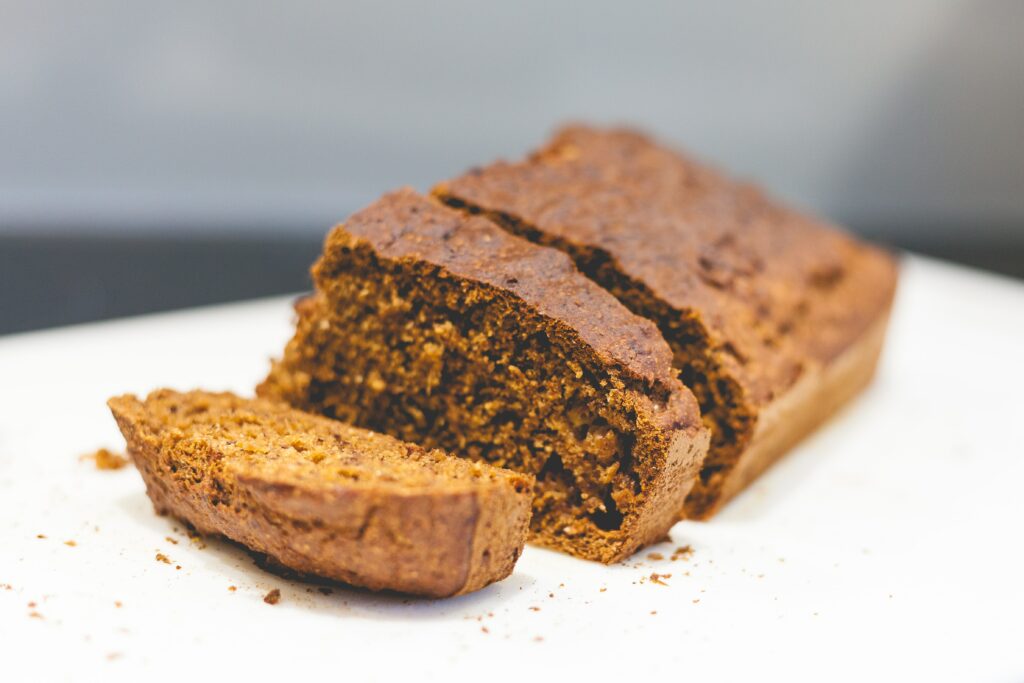
The recipe calls for eggs, oil, and water to be added to the dry mix (Note: this mix contains soybean oil and cane sugar – you could upgrade to this baking mix instead). Or, you can make the Trader Joe’s mix healthier by using a no-sugar added applesauce instead of vegetable oil. Applesauce can be a simple 1:1 swap for vegetable oil, but if you’re wanting to keep the carbohydrates lower, swap ½ of the vegetable oil for applesauce and the other ½ for a heart-healthy olive oil.
Another great addition to the pumpkin batter? Add chopped walnuts or pecans! This provides a boost of heart-healthy polyunsaturated fat and promotes blood sugar stability. Lastly, pair your pumpkin bread with greek yogurt or nut-butter for an extra dose of protein and fat to keep your blood sugar balanced.
2. Pumpkin Pie
You know it, I know it, a pumpkin pie is always welcome at any holiday themed get together – did anyone remember coconut whipped cream?! When picking out your pie, read your ingredients! Is it really just pumpkin in there? 
A typical pumpkin pie crust will be made with bleached flour, sugar and vegetable oils. Foods made with these refined and concentrated ingredients are low in fiber (meaning they are high-glycemic) and cause an unwelcome spike in blood sugar; especially when paired with a sweet, concentrated filling and a dollop of whipped cream.
Instead of using all-purpose flour as the base of your crust, switch it out for a blood-sugar friendly almond flour crust! Almond flour is a low-glycemic alternative to all-purpose flour, and has 7g of protein per ¼ cup and 15g fat. The higher amount of protein and fat in almond flour can help moderate the sharp spikes in blood sugar, and keep blood glucose steady even with the sweet pie filling. Smart hack! Keep in mind, almond flour is not a 1:1 swap for regular flour and requires an alternative recipe.
And then, there’s your pumpkin filling! Small adjustments can make a big impact on your blood sugar, here. Traditionally, pumpkin pie is made with condensed milk as a main ingredient. Not only is condensed milk rich in saturated fat, but concentrated in sugar and absolutely not necessary for a flavorful pie. Time for a healthy swap! Use full-fat canned coconut milk as an excellent dairy-free and paleo alternative to your condensed milk. You can also cut the added sugar in your pumpkin pie but just using less; I usually do 25% of what is called for and will oftentimes use a more natural option like monk fruit or date sugar.
3. Mac & Cheese
Macaroni & cheese is one holiday staple that can’t be forgotten. Period. Unfortunately, when it comes to nourishing and blood-sugar friendly side dishes, mac & cheese doesn’t fit the bill. This dish, full of refined carbohydrates and trans fat, is missing some of the key Whitness-Nutrition approved features we love! Where is the protein and fiber?
Let’s start with the star of the show; Cheese. Instead of a traditional block cheese, use a grass-fed cheese! Or, to decrease the cholesterol content, use a nut-based cheese like Treeline or Kitehill.
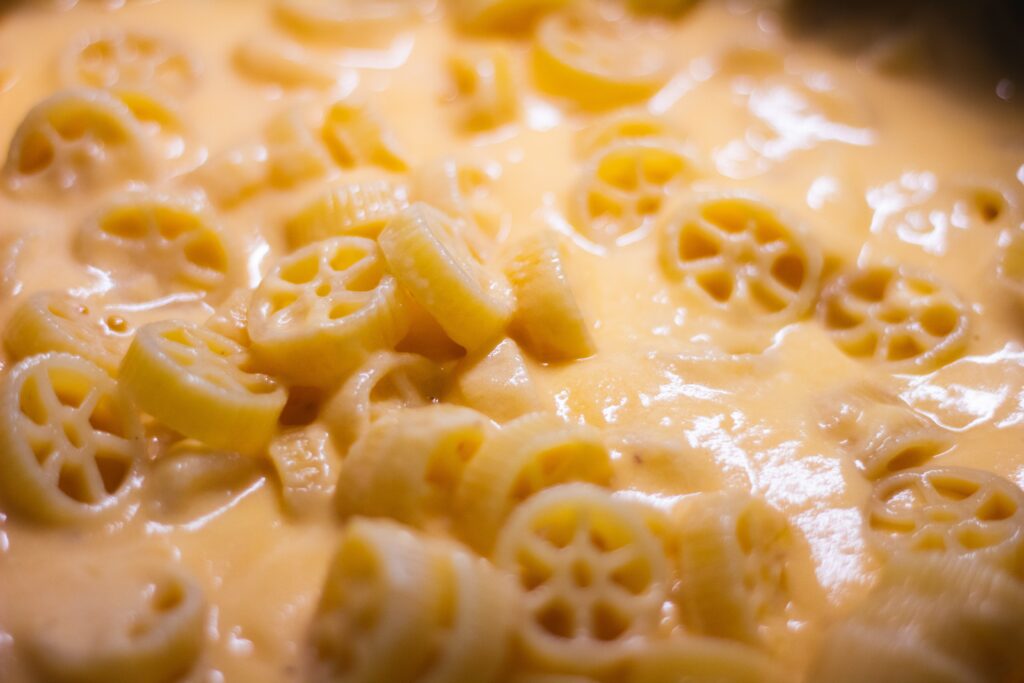 You can also improve the glycemic index of this traditional pasta dish by using bean-based pasta, such as Banza or Intolerant or Explore Cuisine. These legume noodles contain twice the protein content and almost three times the fiber. Note, besides more fiber and protein, this would also make your dish gluten-free friendly!
You can also improve the glycemic index of this traditional pasta dish by using bean-based pasta, such as Banza or Intolerant or Explore Cuisine. These legume noodles contain twice the protein content and almost three times the fiber. Note, besides more fiber and protein, this would also make your dish gluten-free friendly!
It’s worth noting, traditional mac & cheese dishes are lacking in colorful veggies! And, the more color you can add to any dish, the more vitamins, minerals, antioxidants, and fiber you are adding to your meal. You can virtually add any vegetable of your choosing into the mix and it will most likely turn out great. Some of my favorites to add to a mac & cheese dish include steamed cauliflower, minced spinach, and frozen green peas. Turn your simple mac & cheese into a dish of both flavor and function!
4. Pumpkin Spice Latte
At this point, it feels like a pumpkin spice latte is a part of American culture just as much as the super bowl is in February or fireworks on the fourth of July. When the leaves begin to change color and the weather slightly cools, we run to Starbucks and order the beloved pumpkin spiced latte. Although delicious, and iconic, a grande sized pumpkin spiced latte contains 390 calories, 14g of fat, and 37 grams of added sugar. How much added sugar a day am I aiming for, you ask? The recommended amount of added sugar is 10% of total calories. So if that’s 50g, congratulations, you’ve knocked out 74% of your daily intake before 9 AM! ![]()
![]()
As a dietitian and diabetes-educator, I love a good food favorite remix. You can continue to enjoy your PSL from Starbucks with some simple, less blood sugar havoc-wrecking swaps! Follow the What Would Whitney Order (WWWO) protocol when that craving for a PSL hits. You can have pumpkin spice bliss AND blood sugar bliss. ![]()

How A Registered Dietitian orders a PSL:
- Skip the whip
- Ask for ½ pump syrup
- Swap whole milk for almond milk
- Stick will a tall
- Ask for pumpkin spice in your americano!
Don’t forget! You can also go DIY and make your own pumpkin spice latte at home, by using a low sugar pumpkin flavored creamer from the grocery store. nutpods make an excellent unsweetened dairy-free pumpkin spice creamer that brings you all the Fall flavors directly to your door. You can use code WHITNESSNUTRITION for 15% off on their website.
5. Candied Nuts
Sugar coated, festive flavored pecans, amongst other nuts and seeds, seem to be everywhere this time of year. And while they seem like a healthier snack, they tend to be the most concentrated in sugar! But, I have a smarter approach for you! 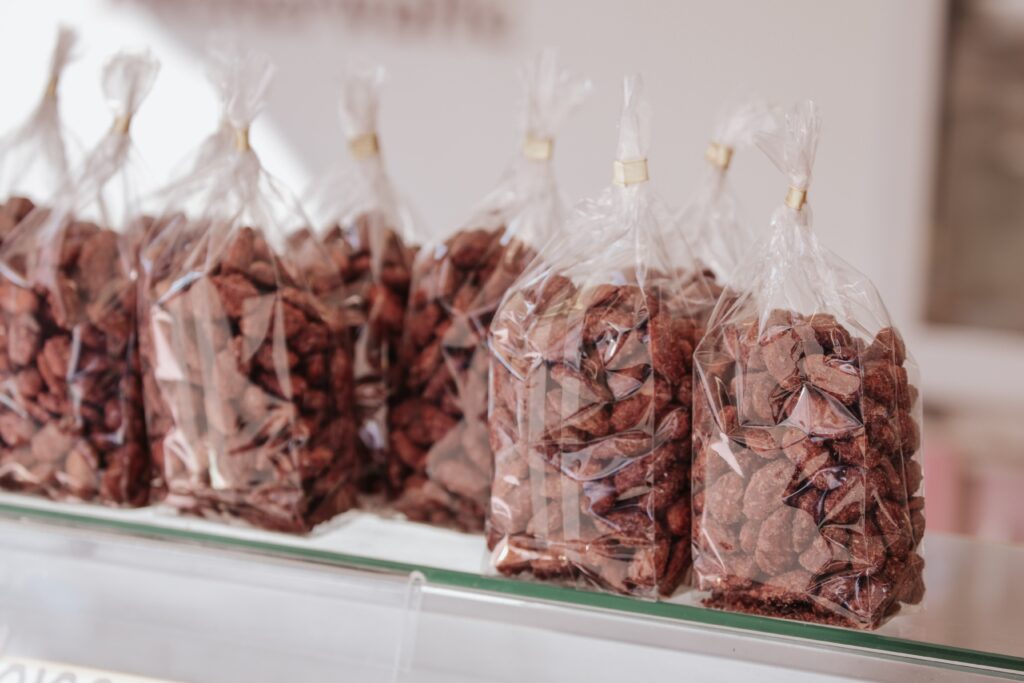
Instead of going for the coated and flavored nuts, opt for the raw and sprouted versions! Even better, after your visit to the pumpkin patch, save your pumpkin seeds and make your own healthy snack! Unlike most of the pumpkin seeds you will find in the store, the seeds that come directly from the pumpkin are in their natural form and will still be encased in their shell. The shell is edible and honestly the best part. The seeds in the shell add a satisfying crunch and increase fiber content. By making your own flavored seeds (or nuts!) at home, you can control the ingredients and therefore the nutritional benefits and flavors.
If you err on the sweet side, toss your toasted seeds in olive oil and add cinnamon, pumpkin spice, and maple syrup. If you prefer a salty snack, toss your seeds in olive oil, salt, pepper, paprika, and garlic powder. Either option is delightful, satisfying, and packed with nutrition.
Whether you’re gathering around the Thanksgiving table or looking forward to a Friendsgiving get together, remember to slow down and savor each bite while nourishing your body. Cherish the time off, holiday movies, family memories, and keep happy this holiday season.
But, if the food around the holidays and anticipation around “new year, new me” is already causing you to feel stressed and worried. Know, you’re not alone! Whitness Nutrition is here to help. Schedule an appointment today to discuss healthy holiday habits, how to navigate the holiday season, and enjoy your health in every season!
